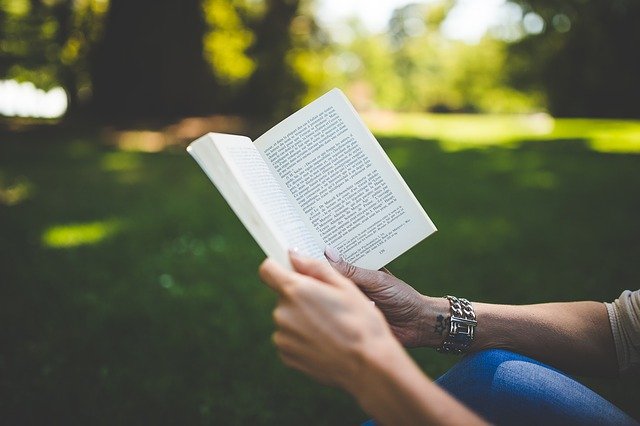Contemporary literature: what it is, literary origin and development, characteristics, authors and more
Contents
What is contemporary literature?
It is one of the most important periods in the literary world, which refers to a series of styles and forms that developed from 1940 to the present. This period is characterized by a great variety of elements that will influence the composition of literary works, among them the new social and political conditions of the time, as well as culture and technological advances.
It was also known as the contemporary movement, which brings together a series of manifestations of literature that in many cases will be the result of the inheritance of the old forms that some authors favor by cultivating them, while others will seek ways to oppose them and innovate completely at this time from the introduction of new searches and new ways that allow them to reach them.
History and origin of contemporary literature
It arises in the year 1940 approximately after the Second World War, an event that produced an important change in the mentality of the society, reason for which a new tendency begins that will be reflected in the compositions of the authors, which will seek to break with the previously worked models and all kinds of aesthetic parameters that have been established in the previous times.
The wave of changes that proceed in this era will be a very important source for the consolidation of new literary genres, since many of them begin to establish themselves with greater strength thanks to the recognition and configuration of subgenres, as well as others will emerge in response to changes in social reality and technological advances that are developed.
A large part of what is currently known as contemporary literature comes from Western authors, however, the process of globalization that is maximized at this time, allows the expansion of the movement, as well as the recognition of authors and literary figures developed in the Middle East, Asia and Africa.
Ultimately, contemporary literature is nourished by previous influences and the new contexts in which it grows as a form of response in its works to the emergence of new living conditions, the need for communication, population growth, economic crises and other series of events that take place in the countries of origin. In this we can not fail to recognize that fantasy novels nourished by fiction, are also evidence of the return to rhyme in poetry but that allows authors to develop with greater freedom through experimentation with new forms.

Literary development of the contemporary era
The main engine of contemporary literature will be the creation of works related to fantasy, mystery and fiction, based on events that have taken place in real life. In addition to this, the technological advances of the present conditions will be reflected in the works, as well as industrial advances that will allow the creation of completely innovative works for the time.
Likewise, in this era new literary genres emerge that begin to consolidate from the combination of other techniques and forms of writing that were being worked, adding the game with the existing limits between fiction and reality, a decisive issue for the literary development of the contemporary era. However, beyond the unreal construction of the environments, the writers do not neglect the intimacy of the characters, since there is also a representation of their inner world from the subconscious and the unconscious.
Other relevant aspects of literary development in contemporary times are:
New formats in narrative: one of the most important is the graphic novel, which brings together a plot of greater complexity in which it is possible to identify the plot and the feelings and thoughts of the characters. Likewise, the fable emerges as a recognized subgenre in which its content consists of simple arguments with a moral at the end of the text as a consequence of the plot.
In this sense, the practice of free verse begins to grow stronger, acquiring a very important position guided by a free structure that leaves aside the verse and allows authors to write with greater freedom and even play with the chronological order, sequences and other aspects that begin to experiment. This will not only be reflected in works of the narrative genre, but also with the way in which prose is used within poetry.
Under this context, the avant-garde or also called avant-gardism, which was born in the first half of the twentieth century and which will be decisive for the development of contemporary literature with the representation of a great diversity of ideas of the time and styles that take place in the composition, begins to develop. To learn more about this period, do not forget to check our literature section where you will find more information.
Main characteristics of contemporary literature
Among the most important features of this literary period we find the following:
Themes: contemporary literature is endowed with a great variety of available issues from which it develops its content, among them we find social inequality and gender inequality, terrorism, ethics, morality, economy, social class structure, war, politics, environment, corruption, alienation of the human being within society, among others that strongly subdue the social, political and cultural conditions of the authors’ nations.
New vision: one of the most important aspects that will account for the compositions in contemporary literature, will be the incorporation of a new vision of the world, which will be in opposition to the traditional beliefs and customs that were seen in the literary works of previous eras.
Time: another of the particularities that begin to strengthen within the literature of the contemporary era is the passage of time, since at this time time time does not run in a linear manner, but it is possible to break the chronological sequence of events. Thus, authors have the freedom to play with the order of events, where they can start a work from the end of the story and develop in the course of the beginning and the knot to explain what happened in the initial part. Some others will often go to the past to build the present and give other twists in the story.
Magical realism: it begins to be used as a narrative technique during the twentieth century. It is an innovative technique that also revolutionizes literary works under a political and social character.
Variety of narrators: unlike what happens in the texts of the narrative genre, which we have already discussed in our section on literary genres, in this literature there is not only one voice of a single narrator, called omnipresent narrator, who knows everything and sees everything. That is why contemporary literature enjoys many points of view exposed to the reader, which allows the reader to have other starting points from which to interpret and connect with the story.
Fiction and non-fiction: although fiction will be one of the most important axes of literature in the contemporary era, it will not be the only environment that writers will develop, since their scenarios will tread both fictional and non-fictional environments and even spread them by way of crossovers between them. In this way, the combination can be seen from the narration of stories and events of real life in magical environments. Historical figures will also be frequent in the works of non-fiction writers, who will include elements such as imaginary scenes and characters that come to life in dialogues.
Children’s literature: another key aspect of literature at this time has to do with the rise of children’s literature, a fact that has been seen mostly in the last 20 years where a wide variety of authors have begun to write more for children and young audiences.

Among the main representatives of this era we can find the following authors, not without first mentioning the most relevant works of contemporary literature: “Ficciones” by Jorge Luis Borges, “Visión de Anáhuac” by Alfonso Reyes Ochoa, “Cien años de soledad” by Gabriel García Márquez, “Isla de pasión” by Laura Restrepo, “Inés del alma mía” by Isabel Allende, “La tabla de Flandes” by Manuel Vázquez Montalbán, “Donde el aire es claro” by Carlos Fuentes, “Ángel fieramente humano” by Blas Otero, “La familia de Pascual Duarte” by Camilo José Cela, among other authors such as: Juan Rulfo, representative of magical realism, as well as Laura Esquivel, Octavio Paz, Elena Poniatowska, Javier Marías, Rosa Montero, Arturo Pérez Reverte, Enrique Vila Matas, Juan Gabriel Vázquez, Álvaro Mutis, among others.
